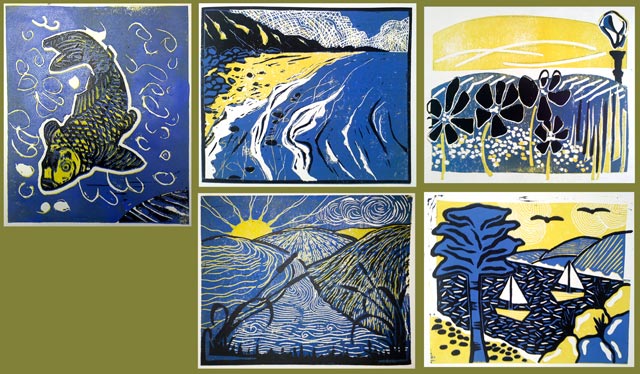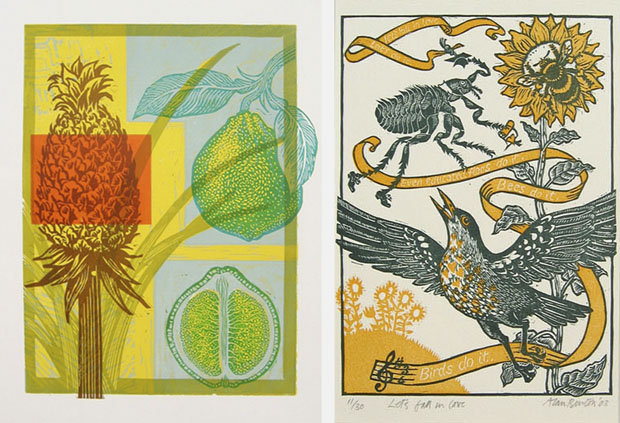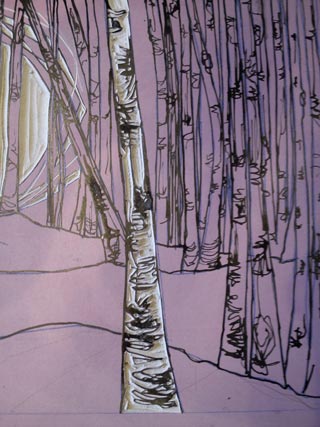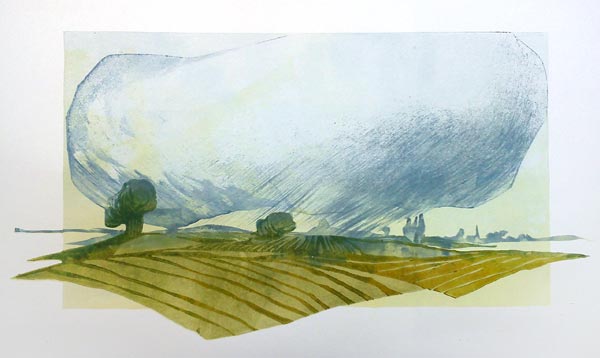I think printmaking is a bit like Marmite or skiing – you either love it or wonder why anyone would honestly bother (for me: Marmite yes, skiing why?). To that end I teach all my classes in a way that allows the newly addicted to rush home and do it immediately. To say ‘Glad you loved the lino cut, but sorry, you haven’t got a nice Albion press like me so you can’t do it at home’ takes a meaner spirit than mine.
To this end I teach reduction lino printing using a table top device to hold the lino in place with a frame to take the paper. It all works a treat and makes multi-coloured prints burnished by hand perfectly possible at the kitchen table. If any of you would like the plans then contact me and I’ll send you the instructions to make it. Not rocket science (or brain surgery), but a few bits of MDF to cut unless you want to make it out of stiff card.

I’ve just finished a weekend of lino cutting at Missenden Abbey and my ten students excelled at their lino prints. I made them work in same three colours plus the white of the paper with some dramatic results as you can see here. As always when I teach, I learnt something myself: to revisit my mark making when I cut the lino. At the moment most of my lino work is very painterly, relying on blends of colour across the block. Now I am eager to be more imaginative with my cutting again and I’ll be starting with a little series of seasonal trees so watch this space…
Much as I love the teaching, I find it almost unbearable to watch my students cutting and not be cutting myself. I have to stop myself asking them to let me help out exactly as I would do if they were eating hot toast, bit of butter and that delicious smear of Marmite…


